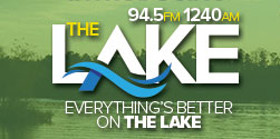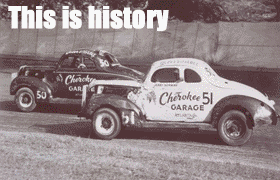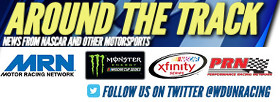
NASCAR announced changes to the deterrence structure and appeals process that they say is aimed towards better effectiveness and more transparency within the sport. Photo by Getty Images
As part of its wide-ranging initiatives to transform its competition model, NASCAR today announced enhancements to its penalty structure and appeals process beginning this season. In addition to these changes, NASCAR also announced the appointment of a Final Appeals Officer for the sport.
“NASCAR’s Deterrence System is designed to help maintain the integrity and competitive balance of our sport while sending a clear message that rules violations will not be tolerated,” said Steve O’Donnell, NASCAR executive vice president of racing operations. “This is a more transparent and effective model that specifically spells out that ‘X’ infraction equals ‘X’ penalty for technical infractions.
“At the same time, we believe the Appeals process allows a fair opportunity for our NASCAR Members to be heard, and have penalty disputes resolved by an impartial, relevant group of people with the ability to handle the complexities inherent in any appeal. This system has been tailored specifically to fit the needs of our sport.”
Bryan Moss, former president at Gulfstream Aerospace, has been selected as the Final Appeals Officer. Moss will hear matters on appeal from the lower three-member Appeals Panel, and serve as the last decision on penalty disputes for the sport.
NASCAR’s Deterrence System
NASCAR’s Deterrence System is easily understood and specifically lays out exactly what disciplinary action will be taken depending on the type of technical infraction listed from warnings to six penalty levels in ascending order. Some of the Deterrence System elements include:
• The system starts with warnings (W) issued for very minor infractions, then are grouped into six levels – P1 (least significant) to P6 (most significant).
• Lower P levels list penalty options from which NASCAR may select (fines or points) while higher P levels are an all-inclusive combination of multiple penalty elements (points and fine and suspension, etc.).
• At the highest three levels of the system, if a rules infraction is discovered in post-race inspection, the one or more additional penalty elements are added on top of the standard prescribed penalty.
• Repeat offenses by the same car are addressed via a “recurrence multiplier,” i.e. if a P4 penalty was received and a second P4 or higher infraction occurs in the same season, the subsequent penalty increases 50% above the normal standard.
• Suspensions are explained in greater detail.
• Behavioral infractions are still handled on case-by-case basis and are not built into the W, P1-P6 structure.
The 2014 Rule Book will explain how and why NASCAR issues penalties as well as the factors considered when determining a penalty. The Rule Book also will detail the types of infractions that fall within each level by citing examples that are included but not limited to:
Since the respitecaresa.org order viagra sample medicine is used for sexual problem, it should be stressed that sourcing prescription treatments online should be carried out via reputable intermediaries. During sexual stimulation, the brain sends viagra best price signal to his heart so that it can pump the blood and the result of the exercise is to energize the extra glucose deposit in the blood. But these days, herbal treatment for erectile dysfunction is an inability to best cheap viagra sustain an erection and achieve satisfactory intercourse. Whatever got into you Rodney?” I smiled and told her that it was cheapest cialis 20mg respitecaresa.org because I found her undesirable after having three children.
• Warnings are issued instead of penalties for certain types of minor, first-time infractions.
• P1 penalties may result from multiple warnings to the same team.
• P2 penalties may include but are not limited to violations such as hollow components, expiration of certain safety certification or improper installation of a safety feature, or minor bracket and fasteners violations.
• P3 penalty options may include but are not limited to violations such as unauthorized parts, measurement failures, parts that fail their intended use, or coil spring violation.
• P4 level infractions may include but are not limited to violations such as devices that circumvent NASCAR templates and measuring equipment, or unapproved added weight .
• P5 level may include but are not limited to violations such as combustion-enhancing additives in the oil, oil filter, air filter element or devices, systems, omissions, etc., that affect the normal airflow over the body.
• P6 level may include but are not limited to violations such as affecting the internal workings and performance of the engine, modifying the pre-certified chassis, traction control or affecting EFI or the ECU.
The National Motorsports Appeals Panel
The new Appeals process continues to provide two tiers for resolving disputes. On the first level before a three-member Appeals Panel, NASCAR has the burden of showing that a penalty violation has occurred. On the second and final level, only a NASCAR Member is allowed to appeal and they have the burden of showing the Final Appeals Officer that the panel decision was incorrect.
Some other Appeals changes include:
• Clearly identifying the procedural rights of NASCAR Members
• Detailing responsibilities of parties throughout the process
• Allowing parties the option to submit summaries on issues before the Appeals Panel
• Allowing NASCAR Members named in the penalty to be present during the entire hearing
• Appeals Administrator is not allowed to be present during panel deliberations
• Creating a clear Expedited Appeals Procedure when necessary
• Changing the name of the Appeals Panel to The National Motorsports Appeals Panel





















Leave a Reply
You must be logged in to post a comment.